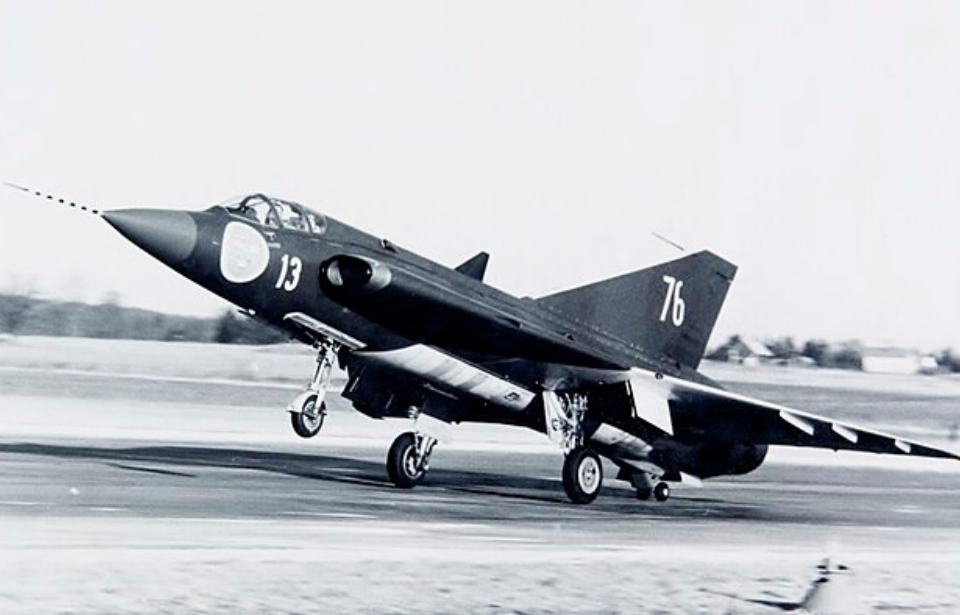Following World War II, the demand for faster and more advanced jet fighters escalated, prompting engineers to innovate. In the 1960s, Swedish engineers at Saab took on the ambitious task of designing the J35 Draken, starting with an unconventional idea. They envisioned a fighter jet with no tail and a double-delta wing—a design that was untested and fraught with potential challenges.
Despite the risks, Saab’s engineers remained resolute, pushing the boundaries of aviation design with creativity and determination. Their innovation paid off, as the Draken went on to become a groundbreaking aircraft, leaving an indelible mark in the history of fighter jets.
Development of the Saab J35 Draken
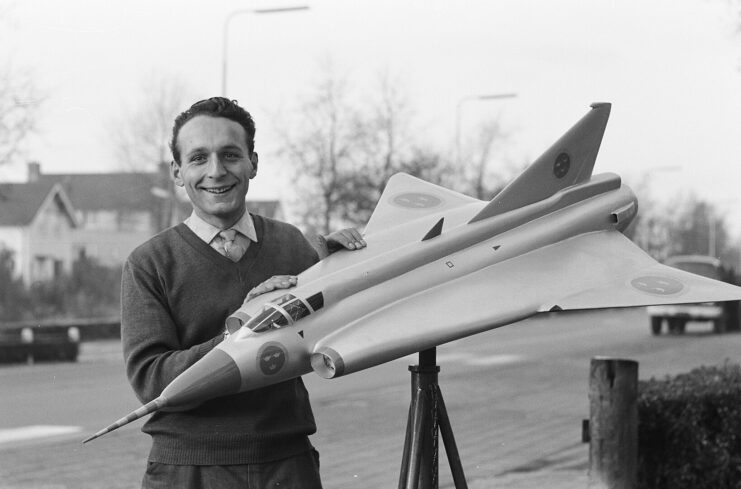
Amid the Cold War, the Swedish Air Force was determined not to fall behind in the race for cutting-edge jet fighter technology. They envisioned a supersonic interceptor capable of intercepting bombers at high altitudes, prompting the Defence Materiel Administration to lay out stringent requirements for a next-generation aircraft.
Unlike the U.S. Air Force’s Lockheed F-104 Starfighter, the Swedish fighter had to fulfill a unique role—it was designed to operate from reinforced public roads, a strategy born out of Sweden’s need to protect itself against potential nuclear threats during the Cold War. Additionally, it needed to be effective in all weather conditions.
Thus, the Saab J35 Draken, also known as the “Nordic Dragon,” was conceived to meet these high demands.
The Draken’s standout feature was its double-delta wing design, a daring choice that had never been tested in operational aircraft. Though the design posed potential risks, it promised solutions to many of the challenges faced by the Swedish Air Force. The robust delta wing structure provided ample space for fuel storage, which was crucial for long-range missions, although it did create additional drag.
Without the aid of modern tools like computer simulations, Saab’s engineers embarked on a painstaking process of trial and error. Through extensive wind tunnel testing and initial flight trials, they developed a smaller, flyable prototype known as the Saab 210, or “Little Dragon.” The Little Dragon made a successful first flight over Stockholm in January 1952, proving the concept and breathing life into the full-scale J35 Draken project.
Saab J35 Draken specs
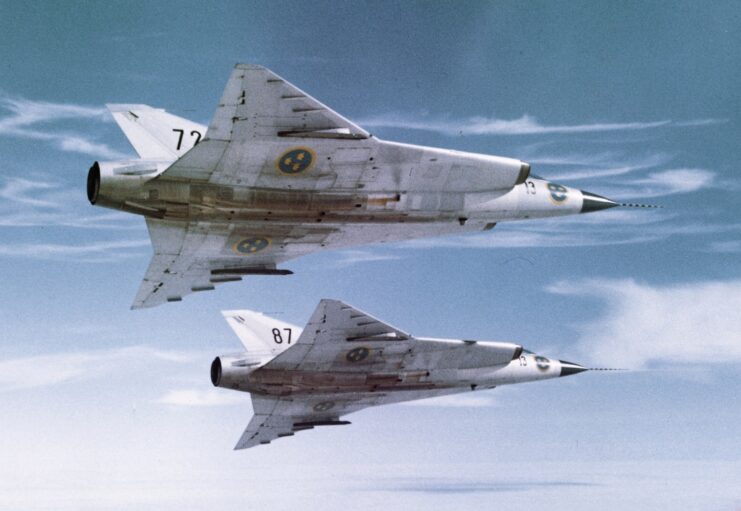
The J35 Draken stood out with its unique double-delta wing shape, which gave it excellent performance at both high and low speeds. The sharp angles helped it cut through the air efficiently while also providing stability during slower maneuvers.
Built for speed, the Draken was powered by a turbojet engine with afterburners, allowing it to fly at over twice the speed of sound—more than Mach 2. The cockpit gave pilots a wide, clear view, and the jet was equipped with advanced radar and fire-control systems that made it one of the most high-tech fighters of its era. Its body was split into front and rear sections, each carefully engineered to house key systems and components.
In terms of firepower, the J35 primarily carried up to four AIM-9 Sidewinder air-to-air missiles on its wings. It could also be armed with rockets and bombs stored inside the fuselage. For different mission needs, it could be outfitted with two 30 mm cannons or extra fuel tanks for extended range.
A rather bouncy start
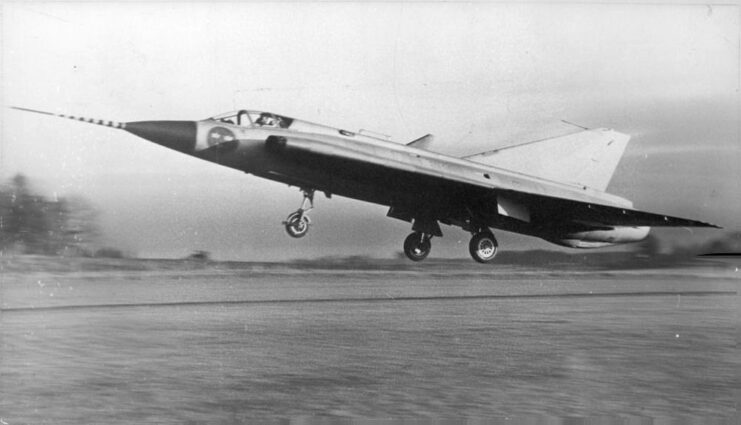
The Saab J35 Draken’s early days in service were anything but easy.
Its double-delta wing design was a groundbreaking concept, but it made the aircraft difficult to control. Landing required pilots to manually stabilize the jet, making every touchdown a high-risk challenge. However, there was an unexpected upside. While struggling to master the aircraft, pilots accidentally discovered a maneuver that no other country had figured out at the time.
Cobra Maneuver

While working to master the tricky J35 Draken, Swedish test pilots discovered an important flying technique called the Cobra Maneuver. When the Draken stalled at high angles of attack and became hard to control, they learned that by quickly lowering the angle of attack, they could break the stall and regain control of the jet.
This clever move essentially turned the Draken into a giant airbrake, allowing it to sharply reduce its speed in a matter of seconds. With its impressive speed, range, and advanced systems, the J35 reshaped the meaning of a “super stall.” The Cobra Maneuver became a daring display of controlled stalling, highlighting the aircraft’s remarkable agility and ability to slow down quickly when needed.
Saab J35 Draken’s legacy
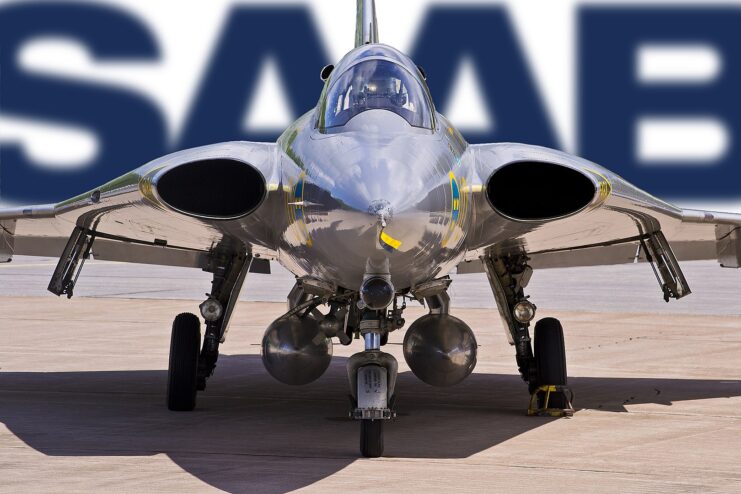
Not only was the J35 Draken a high-altitude interceptor, it also proved to be a capable dogfighter. With impressive quick-turn capability and its high speed, the Swedish fighter was twice as capable as other single-engine jets of the same era. The improved J35B model featured an enhanced power plant, an enlarged afterburner, a redesigned rear fuselage and integrated with the air defense control network, STRIL 60.
More from us: Why Did a Test Pilot Wear a Gorilla Mask In Flight?
While the Cobra Maneuver is now associated with more modern aircraft like the Sukhoi Su-27 and the Mikoyan MiG-29, it’s important to remember where it all began. The J35 Draken took the aviation world by storm and will be remembered as the aircraft that accidentally discovered the maneuver.
